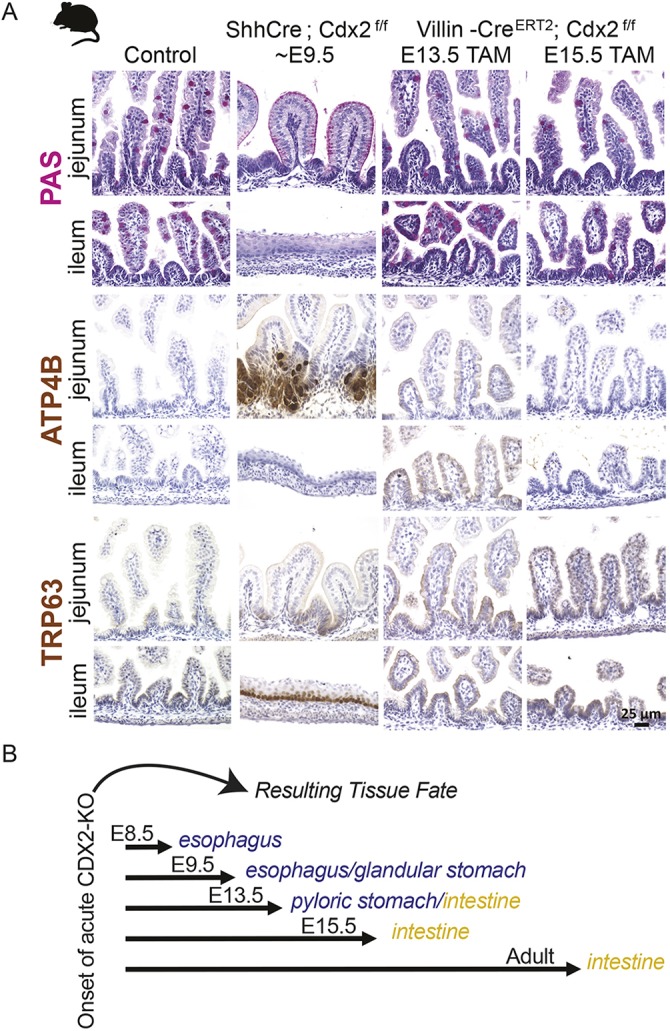Fig. 4.

Developmental stage dictates the consequences of CDX2 loss. (A) Analysis of regional tissue identity on samples from control, Shh-Cre; CDX2f/f or Villin-CreERT2; CDX2f/f embryos, treated with tamoxifen by oral gavage [5 mg of tamoxifen (Sigma, T5648) dissolved in 0.5 ml of corn oil] to induce CDX2 loss as indicated, and collected at E18.5 from the indicated intestinal region. PAS stain marks mucosubstances, including intestinal Goblet cells, which are identified by a punctate staining and are characteristic in the intestinal epithelium (Control or Villin-CreERT2), whereas broad PAS staining at the apical cell surface is indicative of gastric foveolar cells, as observed in the jejunum of Shh-Cre; Cdx2f/f embryos. TRP63 marks esophageal cells and is not typically found in the intestine, but appears ectopically in the ileum of Shh-Cre; Cdx2f/f embryos, but not in control embryos, or embryos induced to delete Cdx2 in the later stages. The parietal cell marker ATP4B is typically expressed in the glandular stomach, but is ectopically expressed in the CDX2-negative jejunum of Shh-Cre; Cdx2f/f embryos, but not in embryos deficient in intestinal CDX2 at the later stages tested. Each immunostain or histological stain is representative of at least three experiments on different embryos. (B) Summary of CDX2 loss-of-function phenotypes from the data shown in A and previous studies. Temporal-specific CDX2 loss at stages earlier than E12.5 induces homeotic transformations, as observed by Gao and colleagues using the Foxa3-Cre driver (∼E8.5) (Gao et al., 2009), in this study using the Shh-Cre driver (∼E9.5), or at ∼E13.5 using the VIllin-Cre driver (Grainger et al., 2010). However, acute loss of CDX2 at later developmental stages (>E13.5) and in the adult compromises intestinal digestive functions, but intestinal identity is preserved (Villin-CreERT2 with tamoxifen treatment at E13.5, E15.5 or adult), as documented in these studies in the embryo (Gao et al., 2009; Grainger et al., 2010), and previously in the adult (Verzi et al., 2011).
